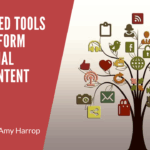 Marketing isn’t easy. While the web and social media have made marketing more accessible than it used to be – at least in some ways – it’s still a complicated business with a steep learning curve.
Marketing isn’t easy. While the web and social media have made marketing more accessible than it used to be – at least in some ways – it’s still a complicated business with a steep learning curve.
One of the hardest things to do is to create strategic content and marketing campaigns that are tailored to your target audience. You might know what your audience demographics are and still find it difficult to come up with a campaign that converts.
The solution? Create a customer avatar! That might sound intimidating if you’ve never done it, but it’s easier than you might think. And doing the work know will make it far easier to nail your marketing campaigns and get the clicks you deserve.
What is a Customer Avatar?
A customer avatar is essentially an in-depth portrait of your ideal customer. It’s more in depth and detailed than a marketing persona, which is meant to be a general representation of the kind of person who might buy your products.
Your avatar should detail what you see as the perfect customer – the type of high-spending, loyal, repeat buyer that you can build a business on.
You should include:
- Demographic information – your ideal customer’s age, gender, marital status, income, etc.
- Goals and values – the things that your ideal customer wants to accomplish, and thinks are important
- Challenges and pain points – the obstacles that prevent your ideal customer from achieving their goals and the things that cause them stress
- Objections and roles – the possible reasons your ideal customer might resist buying your product and the role they play in purchasing your product
- Sources of information – where your ideal customer looks for information about products like yours, including websites, print publications, etc.
Your customer avatar should encompass the most important things about your ideal customer in a way that helps you target your marketing campaigns and increase your sales.
Tips for Creating a Customer Avatar
Creating a customer avatar isn’t difficult, but it takes time. You’ve got to be willing to do some analysis of your existing customers, crunch the numbers, and use what you learn to build your avatar.
Keep in mind that your avatar can’t (and shouldn’t) attempt to represent every customer you have. It might seem counterintuitive, but specificity is a good thing. It’s not possible to talk to everyone – and if you try, you may find that you’re talking to nobody at all.
To get started, you’ll need some basic information about your existing customers, including:
- Their average age
- Their average income
- Their geographic area
- Their marital status
- Number of kids
- Employment details
The averages you calculate aren’t necessarily going to be the attributes you assign to your customer avatar. Think of them as a starting place. But then, ask yourself who your ideal customer is. For example, you might want:
- A relatively young person
- Someone with a young family
- A person with significant disposable income
- A person with pets
There are too many variables to list here. You should focus on the ones that most clearly define the person you consider ideal.
The next step is to give your avatar a personality by giving them a name, age, and other defining characteristics. For example, a credit union might create Mortgage Mary for their mortgage marketing and New Car Ned for their auto loan marketing.
Then, ask yourself some questions about your avatar. Here are some examples:
- Where does my avatar spend time in the real world and online?
- What magazines and newspapers do they read?
- What television shows do they watch?
- What are their responsibilities?
- What keeps them awake at night?
Asking these questions will help you get to the heart of who your ideal customer is and create an avatar that will help to give precision and appeal to your marketing.
The Benefits of Using a Customer Avatar
Creating a customer avatar isn’t just a cool marketing exercise. If you do it right, it’ll help you create the kind of personalized, detailed marketing campaigns that will appeal directly to your most ideal customers.
Unconvinced? Here are some benefits to consider:
- A well-designed customer avatar puts a face, name, and personality to your target audience. Instead of trying to appeal to everybody, you’ll be able to speak directly to Athlete Ann or Workout Will. The specificity you create means that your content will be designed to appeal to the people you most want to attract to your products.
- Having an avatar will affect your marketing in ways that are difficult to pinpoint. When you know who you’re speaking to – even if you’re not actively thinking about it – you’ll choose words and phrases that are tailored to your ideal customer. Everything from the tone of your writing to the content of your bullet points is driven by your audience as defined by your avatar.
- Your avatar provides you with a consistent perspective and voice. It can be difficult to keep your marketing on track when you’re trying to appeal to a broad audience. Speaking directly to your avatar will ensure that you don’t wander far from your brand’s voice and personality.
- You’ll get a highly detailed perspective on the things that your ideal customer wants and needs – including their pain points and possible buyer objections. Knowing what those things are makes it less likely that your marketing will miss the target – and more likely that you’ll be able to attract the customers you want.
- The detail work you put into creating your customer avatar will help you filter out people who aren’t in your target audience. Ultimately, a lead is only good if it’s a targeted lead – and your avatar will ensure that you’re always focusing on the target.
Ultimately, creating a customer avatar makes your marketing better by allowing you to speak directly to your ideal customer’s desires, needs, and concerns. There’s no such thing as a one-size-fits-all solution. The customer avatar helps you direct your marketing to the people who are most likely to turn into loyal customers.




Thanks for the great tips! Too many people create content that interests them instead of what interests the customer, but a customer avatar is a great way to make sure you keep the customer front and center.